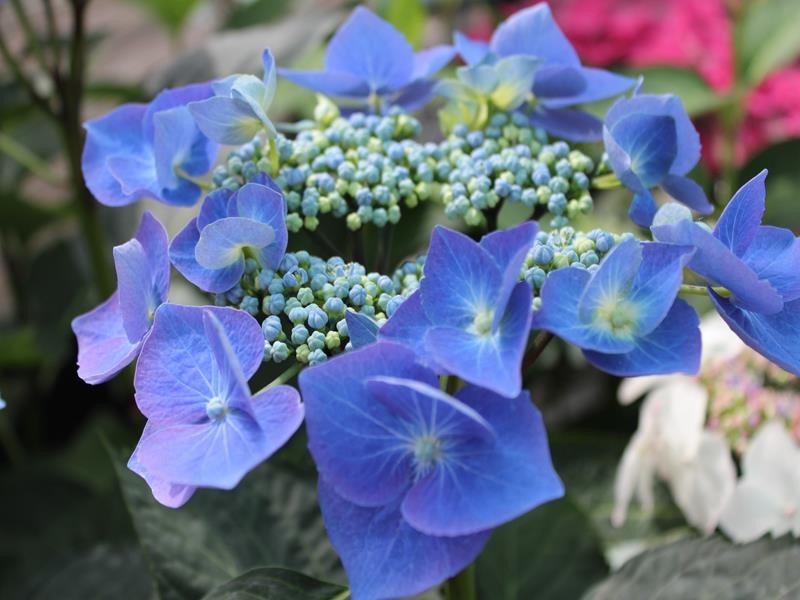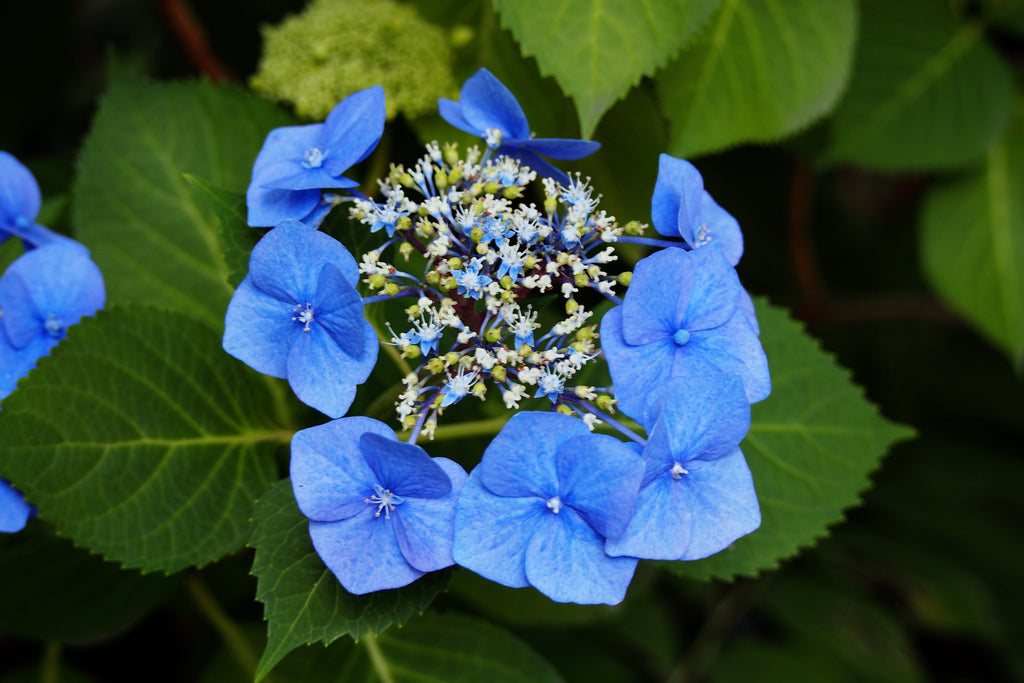Hydrangea Macrophylla Teller Blue: The Ultimate Guide
Hydrangea Macrophylla Teller Blue is a beautiful and easy-to-care-for hydrangea that is perfect for adding a touch of color to your garden. This blog post will provide you with the ultimate guide to caring for Teller Blue hydrangeas, from planting and watering to pruning and fertilizing.
Introduction
Hydrangea Macrophylla Teller Blue is a deciduous shrub that grows 4-6 feet tall and wide. The leaves are dark green and oval-shaped, and the flowers are blue lacecaps that bloom in late spring to early summer. Teller Blue hydrangeas are hardy in USDA zones 5-9, and they prefer full sun to partial shade.
Planting and Watering
Teller Blue hydrangeas should be planted in well-drained soil that is rich in organic matter. The soil pH should be slightly acidic, between 5.5 and 6.5. When planting, amend the soil with compost or manure. Water Teller Blue hydrangeas regularly, especially during the first year after planting. Once established, they can tolerate some drought.
Pruning
Teller Blue hydrangeas should be pruned in the spring, after the flowers have faded. Prune to remove dead, damaged, or diseased branches. You can also thin out the plant by removing some of the older branches. If you want to encourage more flowers, you can prune back the stems by about one-third.
Fertilizing
Teller Blue hydrangeas should be fertilized in the spring and fall. Use a balanced fertilizer, such as 10-10-10, and apply it according to the directions on the label. You can also use a fertilizer specifically for hydrangeas.
Winter Care
In areas with cold winters, Teller Blue hydrangeas should be protected from the cold. Mulch the soil around the plant with 2-3 inches of organic material, such as leaves or pine needles. You can also cover the plant with a burlap sack or evergreen boughs.
Troubleshooting
If your Teller Blue hydrangeas are not blooming, it may be because they are not getting enough sunlight. Hydrangeas need at least 6 hours of sunlight per day in order to bloom well. If your hydrangeas are in too much shade, they may also not bloom.
Another common problem with Teller Blue hydrangeas is leaf scorch. Leaf scorch is caused by hot, dry winds. To prevent leaf scorch, water your hydrangeas regularly, especially during hot, dry weather. You can also mulch around the plant to help retain moisture.
Conclusion
With proper care, Teller Blue hydrangeas can provide you with years of beauty. By following the tips in this blog post, you can help ensure that your hydrangeas thrive and bloom beautifully for many years to come.
If you're looking for a beautiful and easy-to-care-for hydrangea, the Hydrangea macrophylla Teller Blue is a great choice. This hardy shrub produces large, lavender-blue flowers in the summer, and it can be grown in a variety of climates.
Teller Blue hydrangeas prefer partial shade, but they can also tolerate full sun in cooler climates. They need well-drained soil and regular watering, especially during the summer months. To encourage blue flowers, plant Teller Blue hydrangeas in soil with a pH of 5.5 or lower.
If you're interested in learning more about Teller Blue hydrangeas, I recommend visiting . This website has a wealth of information about the plant, including care tips, planting instructions, and more.
FAQ of hydrangea macrophylla teller blue
- What is Hydrangea macrophylla Teller Blue?
Hydrangea macrophylla Teller Blue is a type of hydrangea that is known for its beautiful blue flowers. It is a relatively hardy plant that can be grown in USDA hardiness zones 5-9. Teller blue hydrangeas typically grow to be 3-6 feet tall and wide, and they bloom from July to September. The flowers are a deep blue color, and they have a light, sweet fragrance.
- What are the soil requirements for Hydrangea macrophylla Teller Blue?
Hydrangea macrophylla Teller Blue prefers acidic soil with a pH of 5.5-6.5. If the soil is too alkaline, the flowers will turn pink. You can test the pH of your soil using a soil testing kit. To make the soil more acidic, you can add peat moss, pine needles, or sulfur.
- How much sunlight does Hydrangea macrophylla Teller Blue need?
Hydrangea macrophylla Teller Blue prefers partial shade. Too much sun can cause the leaves to scorch, and too little sun can prevent the flowers from blooming. If you live in a hot climate, you may need to provide some afternoon shade for your hydrangea.
- How much water does Hydrangea macrophylla Teller Blue need?
Hydrangea macrophylla Teller Blue needs moist soil, but it does not like to sit in water. Water your hydrangea deeply once a week, and more often during hot, dry weather. You can also help to retain moisture by mulching around the plant with pine needles or bark.
- How do I prune Hydrangea macrophylla Teller Blue?
Hydrangea macrophylla Teller Blue can be pruned in late winter or early spring. You can remove dead, damaged, or diseased branches, as well as any branches that are crossing or rubbing against each other. You can also shorten the main stems by up to one-third to encourage bushier growth.




Post a Comment for "Hydrangea Macrophylla Teller Blue: The Ultimate Guide"